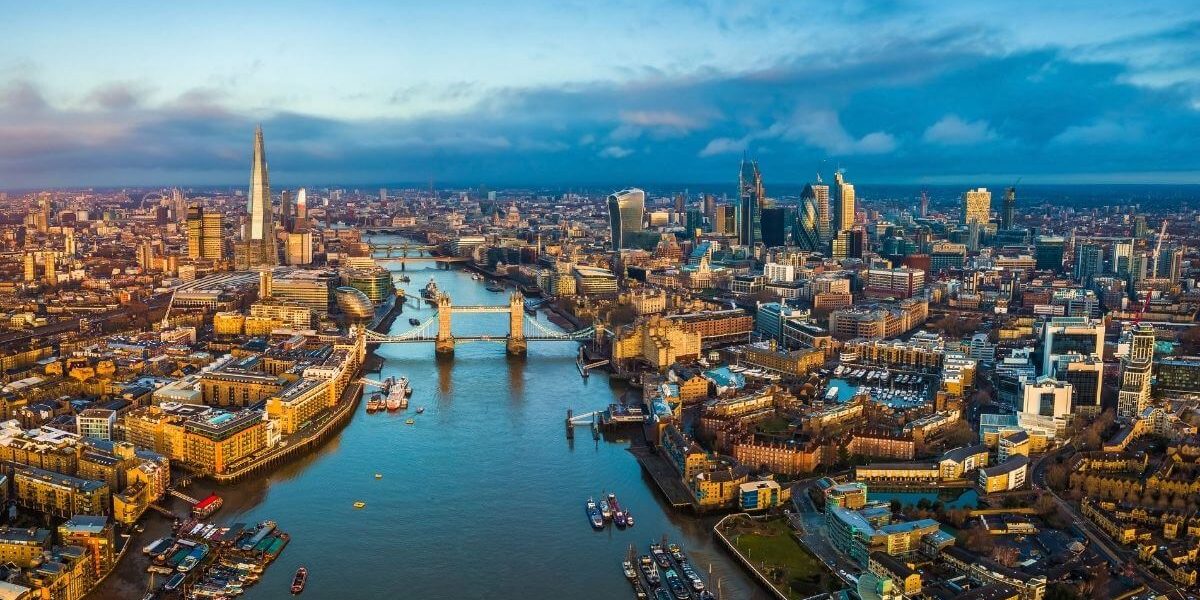The results of the 2022 edition of the annual New London Architecture (NLA) London Tall Buildings Survey, published in partnership with global property consultancy Knight Frank, indicate a downward trend in London’s tall buildings with applications down 13.3% over the previous year.
The annual survey – now in its ninth year – provides the only comprehensive analysis of tall buildings in London and offers a snapshot of how the capital’s skyline is evolving. The survey includes all buildings 20 stories and above, which are either in planning or under construction. For residential schemes, current and historic data has been supplied by Molior London and commercial building data comes from Knight Frank’s proprietary database.
According to the NLA and Knight Frank, there are signs of a slowdown of tall buildings in London. The pipeline of 20-storey plus buildings in the capital contracted 1% year-on-year in 2021, while the number of new planning applications put forward by developers as well as new construction starts, both bellwethers for the state of the market, came in lower than long-term trends. Conversely, planning decision makers acceptance of tall buildings does not appear to have been dampened as evidenced by the record level of planning approvals granted.
Peter Murray, Curator in Chief at New London Architecture, said: “Signs of a slowdown in this year’s results is not entirely unexpected; a combination of the uncertainties created by the pandemic, rising build costs, new safety measures, environmental regulations and increased affordable housing obligations in recent years have imposed greater scrutiny on high-rise development and it has had a knock-on effect.”
Stuart Baillie, Head of Planning at Knight Frank said: “This year’s figures should not be interpreted as the end of tall building in London. Quite the contrary. The survey points to a record level of permissions being granted last year, up 26% on 2020, and the number of completed projects was robust. Context is essential; the future pipeline may have contracted slightly, but it remains significant. In total, there are 583 tall buildings which are proposed or approved with 109 of those currently under construction, 28% and 19% higher than back in 2016 respectively.”
What is coming through the planning system and out of the ground is increasingly across the outer London boroughs (Zones 3, 4 and 5), as well as for the Build to Rent sector, mirroring the trend in the wider new-build housing market.
Key statistics from this year’s research include:
- Developers submitted 72 planning applications for tall buildings in 2021, down 13.3% on a year earlier and the third consecutive year application numbers have dropped. Submitted applications are 37% lower than the market peak in 2018. Of the applications submitted in 2021, a total of 12 (17%) were granted full planning permission the same year and a further five were approved at Planning Committee but were yet to sign S106 agreements by 31st December.
- The average height of tall building applications put forward in 2021 was 28 storeys, though this varies by borough with an average of 31 storeys for applications across inner London boroughs to an average of 25 storeys in outer London.
- There were 98 full planning permissions granted in 2021, 36% higher than in 2020, and the highest annual figure on record. Some 56% of permissions were granted in outer London boroughs, including a combined 34 in Newham and Brent. In part, the high level of permissions granted reflects the bumper crop of applications submitted in 2018 and 2019 which continue to work their way through the system with 51% of consents last year for plans submitted in 2019 or earlier. However, it also suggests a willingness of Planning Committees to approve tall building proposals, either as standalone schemes or as part of a larger masterplan. Some 7% of permissions were for commercial buildings, down slightly from 13% the previous year.
- In 2021, a total of 29 tall buildings commenced construction. While this was an increase on 2020, it represents the second lowest level of new starts for tall buildings across London since 2013. A drop in new starts is consistent with the decline seen in the wider London development market over the last couple of years, while rising build costs and ongoing supply chain disruption is likely to have put a hold on some projects last year especially given the higher costs associated with building tall. We expect future surveys will register a slowing in delivery rate as the pipeline works its way through over the next three to four years.
- In total, 34 residential and commercial tall buildings were completed in 2020, slightly below the 37 which completed last year and fewer than the 52 which were expected to complete according to last year’s survey. As in previous years, the data suggests that tall buildings are an increasingly deliverable form of development outside of the historically ‘prime’ areas, with 15 buildings completed in outer London in 2021, up from 10 in 2020. Notably, some 35% of the completions last year were for the BTR market, up from 24% the previous year.
- The data suggests that 2022 could be a bumper one for completions, with 46 tall buildings expected to complete this year – a 35% increase on the 2021 total.
Stuart Baillie of Knight Frank added: “It should be London’s ambition to be a world leader in delivering exceptionally-designed and highly sustainable tall buildings – and the construction industry plays a vital part in achieving this goal. With this in mind, we should not focus on the quantity of tall buildings coming forward, but rather the quality. It is crucial that any tall building delivered not only positively contributes to the economy and sustainability of the capital, but also meaningfully adds value to its local context.”
Peter Murray of NLA concluded: “What is a tall building? The NLA survey has always defined a tall building as over 20 storeys, this is the height of many local authority residential towers which formed the majority of taller buildings in London up until the recent boom in the sector. We retain this definition, both because we wish to enable comparisons with previous studies but also because we think it is a sensible general definition. In the current London Plan context is seen as important and in low rise areas anything over six storeys can now be described as a tall building. In the different context of Old Oak the Development Corporation says anything above 15 storeys is tall.”
Source: Show House News












